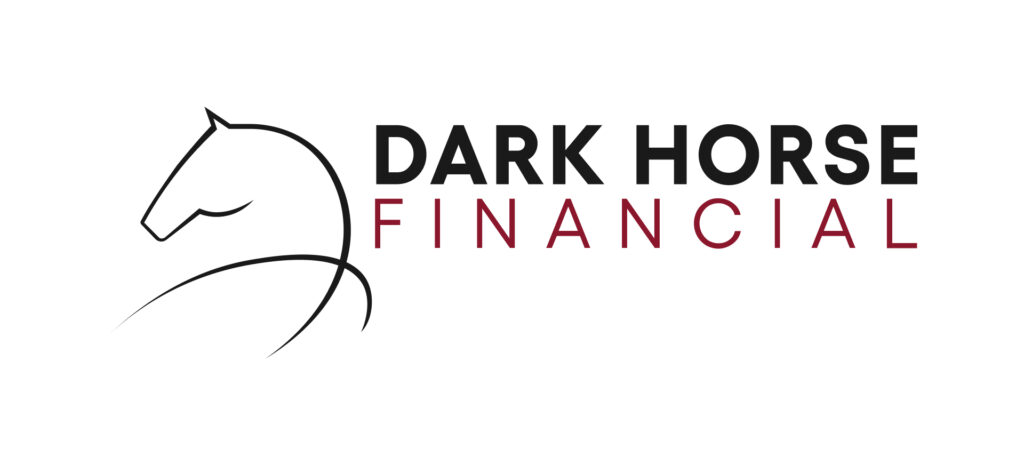Key Takeaways
- Interest-only loans allow you to pay only the interest for a set period, reducing your monthly payments, which can benefit those seeking to optimise cash flow.
- With principal and interest loans, each repayment reduces both the loan balance and the interest paid, helping you build equity in your property.
- Property investors often prefer interest-only loans for improved cash flow and potential tax deductions on interest payments, which can help fund further investments.
- Principal and interest loans offer stability. By gradually paying down your principal, these loans provide a predictable repayment schedule.
- While initial repayments are lower, interest-only loans result in higher interest payments over the loan’s life since the principal isn’t paid down during the interest-only period.
- It may be beneficial to switch to a principal and interest loan if your financial situation improves or if you wish to build equity more quickly over time.
- Principal and interest loans are ideal for borrowers who want to reduce their debt over time and eventually own their property outright.
- Whether you choose an interest-only or principal and interest loan should align with your financial objectives, whether it's maximising short-term cash flow or building long-term wealth.
There are different types of home loans you can get in Australia. Two types that many choose from are interest-only loans and standard principal and interest loans.
Each type has distinct pros and cons, and the right choice for you will depend on your financial goals, personal situation, and the nature of the property you’re purchasing.
Let’s explore the key differences between these two types, discuss the pros and cons of each, and provide guidance on when you might choose one over the other.
What is the Difference Between Interest-Only and Principal and Interest Loans?
At a basic level, the primary difference between interest-only and principal and interest loans lies in how the loan is repaid.
Interest-Only Loan
An interest-only loan allows you to make payments only on the interest portion of the loan for a set period, usually between 1 and 5 years. During this period, you do not make any repayments toward the principal (the amount you initially borrowed). After the interest-only period ends, the loan converts to a principal and interest loan, and your repayments increase as you start paying off both the principal and interest.
Principal and Interest Loan
A principal and interest loan is the more traditional form of home loan. With this type of loan, each repayment includes both the interest and a portion of the principal. This ensures that, over time, you are reducing the amount you owe on the loan. While your repayments are initially higher compared to an interest-only loan, the repayment amount will stay the same throughout the life of the loan. Plus, you gradually pay down your debt, building equity in your property.
Key Differences at a Glance
| Feature | Interest-Only Loan | Principal and Interest Loan |
|---|---|---|
| Repayments | Lower initially (interest only) but will increase after the interest-only period is over | Higher initially (principal + interest) but will stay the same throughout the life of the loan |
| Principal Loan Balance | Stays the same during the interest-only period | Reduces over time |
| Loan Term Impact | Can possibly extend overall loan term | Fixed term (e.g., 30 years) |
| Best For | Investors, short-term cash flow needs | Owner-occupiers, long-term debt reduction |

Pros and Cons of Interest-Only vs Principal and Interest Loans
Understanding the pros and cons of these two loan types can help you decide which is the best option based on your personal or investment goals.
Pros of Interest-Only Loans
- Lower Initial Repayments: The most significant benefit of an interest-only loan is the lower initial repayments. Since you’re only paying the interest, your monthly repayments will be much lower compared to a principal and interest loan. This can be helpful for borrowers who are looking to keep their costs low, such as investors or homeowners with temporarily tight cash flow.
- Improved Cash Flow for Investors: An interest-only loan can provide property investors with greater cash flow flexibility. By reducing their monthly repayment amount, investors can free up money to reinvest in other properties or investments.
- Tax Deductibility for Investment Loans: In Australia, the interest paid on loans for investment properties is generally tax-deductible. This makes interest-only loans attractive to investors, as the tax savings can help offset the costs of borrowing.
- Flexible Strategy for Short-Term Property Holders: If you plan on selling the property in the short to medium term, an interest-only loan can be beneficial as it reduces your financial burden initially. The goal is to sell the property for a profit without having to pay down the principal during your time holding the asset.
Cons of Interest-Only Loans
- No Equity Built: The downside of an interest-only loan is that you are not paying down the principal during the interest-only period. This means you won’t be building any equity in the property.
- Higher Repayments After the Interest-Only Period: Once the interest-only period ends, your repayments will increase significantly, as you will then need to repay both the interest and the principal. If you haven’t planned for this, it can result in financial strain or the need to refinance.
- Increased Interest Payments Over Time: Since you’re not reducing the principal, the total interest paid over the life of the loan will be higher. This can make the loan more expensive in the long run compared to a principal and interest loan.
- Potential for Negative Equity: If the value of the property decreases during the interest-only period, you could find yourself in negative equity (owing more than the property is worth). This could make it difficult to sell or refinance the property in the future.
Pros of Principal and Interest Loans
- Building Equity Over Time: One of the key benefits of a principal and interest loan is that you are gradually reducing the amount you owe. With each repayment, you’re building equity in your property, which can be a great way to create future wealth.
- Predictable Repayments: With a principal and interest loan, your repayments are fixed and predictable, meaning you always know how much you will need to pay each month. This can provide peace of mind, especially for homeowners who prefer a stable financial situation.
- Lower Total Interest Over the Life of the Loan: Since you’re paying off the principal from the beginning, the total amount of interest you pay over the life of the loan is lower. This can result in substantial savings over time.
- Better Long-Term Financial Stability: By paying off both the principal and interest, you’re ensuring that your debt is being reduced consistently, leading to better long-term financial stability.
Cons of Principal and Interest Loans
- Higher Initial Monthly Repayments: The primary disadvantage of a principal and interest loan is that your monthly repayments will be higher (in the beginning) than an interest-only loan.
- Less Cash Flow Since you’re paying down the principal with each repayment, you have less flexibility in terms of cash flow. This might not be ideal for property investors who need to maintain cash flow for further investments or other financial goals.
- Slower Return on Investment (for Investors) For property investors, the higher repayments can reduce the amount of money available for reinvestment. As you’re paying down the principal, it may take longer to see returns on your investment compared to an interest-only loan, where you can use the savings for further investments.

Is an Interest-Only Loan Better for Investment Property?
An interest-only loan is often considered a better option for investment properties by many in Australia, especially for investors who are looking to maximise their cash flow. Since interest payments on investment loans are tax-deductible, investors can reduce their taxable income while keeping their out-of-pocket expenses low.
However, whether it’s the right choice depends on the investor’s strategy. For example, an interest-only loan can work well for investors who plan to hold the property for a short period and expect the property’s value to increase. This allows them to save money on repayments and potentially sell the property for a profit without having to pay down the principal.
That said, principal and interest loans might be a better choice if the investor’s goal is long-term wealth accumulation. By paying off the principal over time, they build equity, which can be leveraged for future property purchases or other investments.
When to Switch From Interest-Only to Principal and Interest
There are a few situations where it might make sense to switch from an interest-only loan to a principal and interest loan. Some of the reasons include:
- Improved Financial Position: If your financial situation improves and you can comfortably afford higher repayments, switching to a principal and interest loan can help you pay down the debt more quickly.
- Increase in Property Value: If the value of your property has increased significantly, you may decide to switch to a principal and interest loan to reduce your debt and build equity more quickly.
- End of Interest-Only Period: Once the interest-only period expires, most loans automatically transition to principal and interest repayments.
- Long-Term Investment Strategy: If your strategy has shifted from short-term gains to long-term wealth accumulation, switching to principal and interest can help reduce your debt over time, ensuring greater financial stability in the future.

How Principal and Interest Home Loans Reduce Debt
A principal and interest loan directly reduces your debt with each repayment. Since your repayments consist of both interest and a portion of the principal, each month, you’re gradually lowering the amount you owe. Over time, this will reduce your outstanding loan balance, and you’ll eventually pay off the entire loan.
The key advantage of this type of loan is that you’re continuously building equity in your property. As you pay down the principal, your equity increases, which can be leveraged for future investments or used as security for further loans.
Which Loan Type Should You Choose?
Choose an Interest-Only Loan If:
✔ You’re an investor looking for tax deductions and decreased costs.
✔ You need short-term cash flow flexibility.
✔ You plan to sell the property within the interest-only period.
Choose a Principal and Interest Loan If:
✔ You’re an owner-occupier wanting to own your home faster.
✔ You prefer stable, long-term repayments.
✔ You want to minimise total interest paid over the loan term.
Using Loan Calculators
One way to see which loan type is for you is to know the cost for each one. We developed different loan calculators to help you understand how much you’ll repay in monthly installments based on what loan type you choose. You can access them here:
- Home Loan Calculator (Principal and Interest)
- Interest-Only Mortgage Calculator
To Sum it Up
When deciding between an interest-only loan and a principal and interest loan, the right choice depends on your personal financial situation and goals. Interest-only loans are attractive for investors looking to maximise cash flow in the short term, while principal and interest loans are better suited for those who want to gradually reduce their debt and build equity over time.
Carefully weigh the pros and cons and consider factors like your financial goals, property type, and long-term plans. If you’re unsure which option is best for you, consulting with a financial advisor or mortgage broker can help.
Choose the Right Home Loan for You
Still unsure what type of loan to choose? Contact our team at Dark Horse Financial, and we’ll help match you with the right loan product and lender. We’ll carefully go over your borrowing needs and your financial situation to find a solution that’s right for you.
Disclaimer: The information provided in this article is for general informational purposes only and does not constitute tax, legal, or financial advice. It is not intended to replace professional consultation with a qualified tax agent, accountant, or legal advisor. Each individual’s or business’s circumstances are unique, and specific advice should be sought to address your particular situation.





